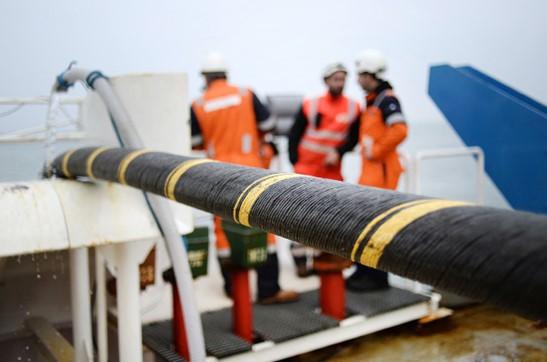Geophysicists have pushed telecom operators to consider smart cables. Smart cables present an answer to a long-standing problem: How can you detect earthquakes under the oceans, which cover two-thirds of the planet? Submarine cables have long been an alluring target for geophysicists. They provide a constant source of power and real-time data streams, while remaining fixed in space over time—a boon for climate studies. Besides improving earthquake and tsunami monitoring, smart cables will also capture faint earthquake waves coming from the far side of the planet, through its interior.

Smart cables present an answer to a long-standing problem: How can you detect earthquakes under the oceans, which cover two-thirds of the planet? Seismometers that can operate on the sea floor are expensive to deploy, short-lived, and often can’t transmit data in real time. Deep floats, called MERMAIDs, can detect earthquakes via their reverberations in water, but only a few dozen have been deployed. Researchers are exploring methods that turn communications cables themselves into sensors, but the most sensitive techniques only reach out a couple hundred kilometers from land. Temperature and pressure measurements of the deep ocean, made by ships and Deep Argo floats, are also scant.
Submarine cables have long been an alluring target for geophysicists. They provide a constant source of power and real-time data streams, while remaining fixed in space over time—a boon for climate studies. And internet giants and telecom companies are already paying for them, smart or not.
Smart cables will offer other scientific rewards, says Patrick Heimbach, an oceanographer at the University of Texas at Austin. They will help track how quickly deep ocean waters are warming because of climate change, as well as changes in large-scale ocean currents, which take heat and carbon dioxide from the surface and store it in the abyss. The sensors can also refine pictures of sea level rise, which is shaped locally by changes in currents and shifts in the sea floor, as well as by the thermal expansion of water itself and melting ice.
Besides improving earthquake and tsunami monitoring, smart cables will also capture faint earthquake waves coming from the far side of the planet, through its interior. Those waves can serve as the equivalent of x-rays, creating pictures of features in Earth’s mantle: subducting tectonic plates, plumes that drive volcanic hot spots, and mysterious “blobs” at the mantle’s base that could be fueling the plumes. And when a cable experiences a service interruption, sensor data could help companies understand whether a submarine eruption or landslide is responsible, Rowe says.
One lingering question has been how well a smart cable will perform if it is not carefully positioned on the sea floor. INGV’s “wet demonstration” test of a 21-kilometer cable off eastern Sicily offers some reassurance, says Giuditta Marinaro, the INGV geophysicist who leads the project. The deployment showed that a smart cable could be unspooled from a ship as fast as standard cable—an important factor, because ship time is the most expensive part of cable projects. The test cable appears to be picking up vibrations well compared with two nearby dedicated sensors, she says. “The quality right now is very good.”
Sources:
SCIENCE
Provided by the IKCEST Disaster Risk Reduction Knowledge Service System
Comment list ( 0 )
